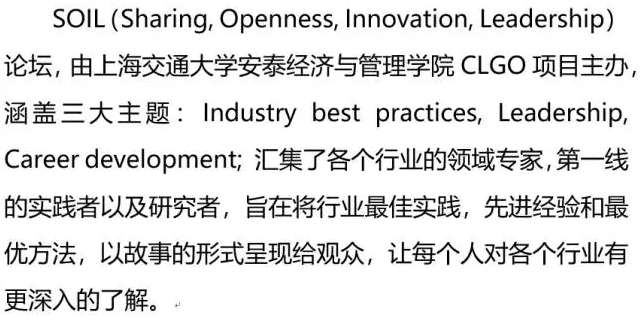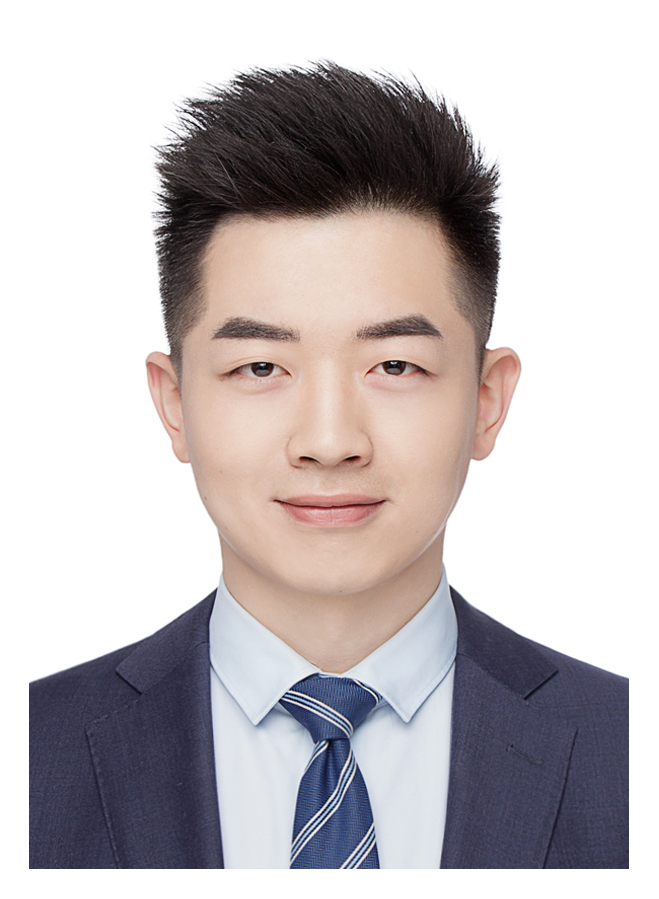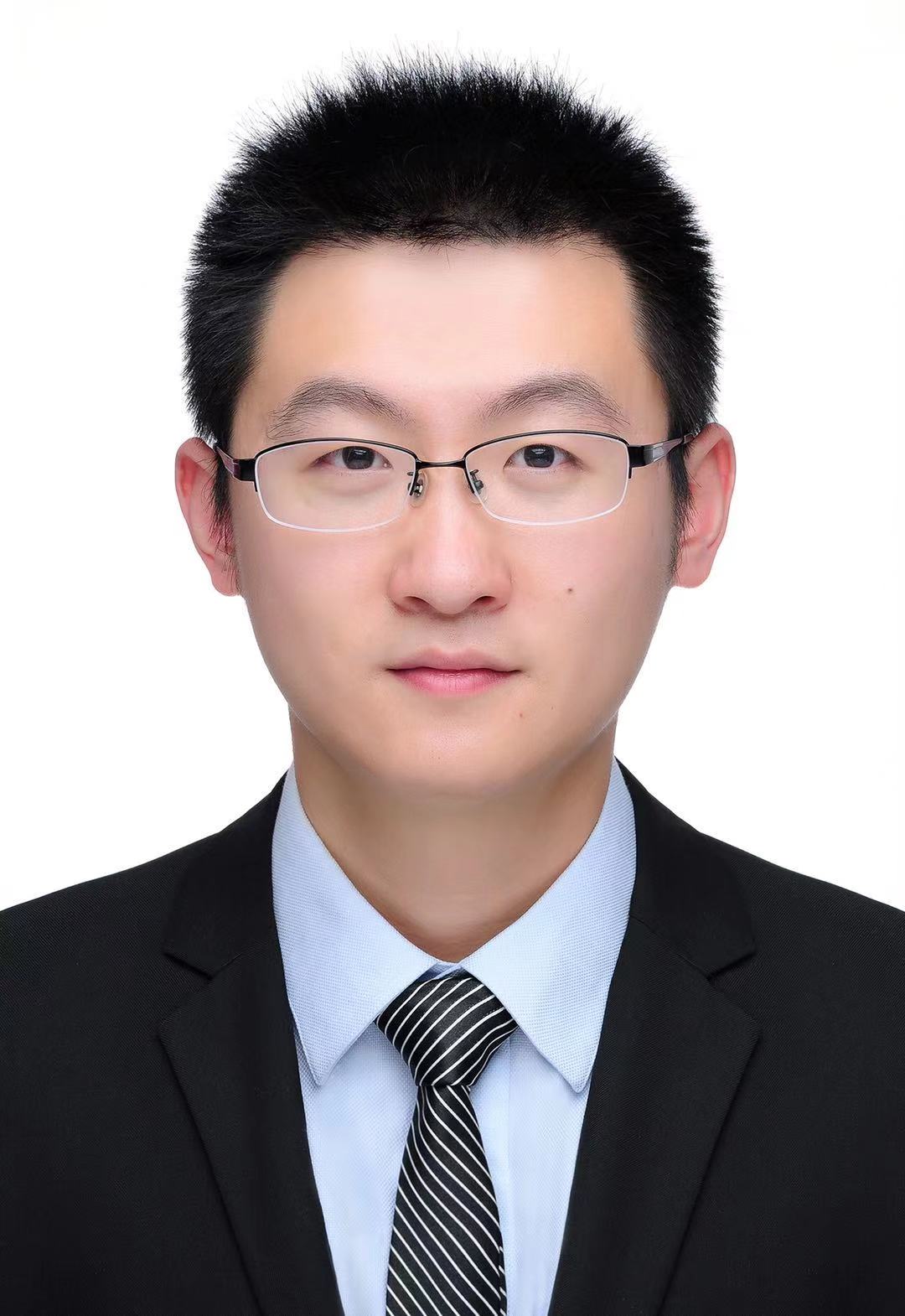"SOIL" 102nd Forum: Tan Rong, Head of Supply Chain of Novartis in Asia Pacific Region, Shares Briefly about the Supply Chain
Time:2022-05-01 Publisher:MBA Office


On April 29, 2022, the China Leaders for Global Operations (CLGO) program of Antai College of Economics & Management (ACEM), Shanghai Jiao Tong University (SJTU) invited Mr. Tan Rong, head of Supply Chain of Novartis in Asia Pacific region, to share online. Tan has 20 years of experience in procurement, logistics and supply chain management in the world's top 500 European and American companies. He is now the head of Supply Chain of China Novartis Institutes for BioMedical Research Co., Ltd.
Tan, with his years of supply chain work experience and professional knowledge, led us to quickly learn what supply chain is and the core value of supply chain management, thus inspiring us to think about the all-win and collaborative thinking of supply chain management.
Tan started his sharing with three questions: “What is supply chain? What does supply chain have to do with us? How should we improve our value in the supply chain?”
Module 1, Three flows: Integrating the three flows of supply chain
Tan compared the characters in Journey to the West to different logistics jobs and vividly introduced the "past life" of the supply chain. The "present life" of the supply chain started in the 1980s, called logistics management. Around 2000, a supply chain management system mainly based in the United States emerged.
He also mentioned that the “triangular forces” of an enterprise, namely R&D represented by Apple, marketing represented by Xiaomi and supply chain represented by Toyota, which interact with each other and are all important to the enterprise. The three flows of the supply chain include: the material flow like a digestive system, the capital flow like a blood circulation system, and the information flow like a nervous system.
Module 2, Two channels: Opening the two channels of supply chain to win
Tan disassembled the SCOR model in the supply chain into “3+3”, which means three internal dimensions and three external dimensions. The external dimensions are suppliers, our company, and customers and the internal dimensions are supply management (sourcing), operation management (production), and logistics management (delivery). Together with the three flows of supply chain, they become “3+3+3”. The two channels of the supply chain are: all-win with suppliers and collaboration with other departments, which together create an efficient supply chain.
Module 3, Taiji Liangyi: Choosing the supply chain strategies
In the module 3, Tan introduced two supply chain strategies: lean supply chain and agile supply chain. Lean supply chain is for cost leading enterprises, such as Toyota and Uniqlo. Agile supply chain corresponds to technological innovation enterprises, such as Apple, H&M and ZARA. He mentioned that the supply chain strategy is not constant. There are two situations that will change the supply chain. The first is the change of the product life cycle. When the product is in the growth stage, an agile supply chain is applicable, but when the product is in the mature or declining stage, as the cost is very important, it needs to change from an agile supply chain to a lean supply chain. The second one depends on the R&D capability of the enterprise. After a new function is developed, the product changes from the mature stage to the growth stage, and the supply chain management strategy needs to change from a lean supply chain to an agile supply chain.
Module 4, Complement each other: Using the supply chain models wisely
Tan shared about the supply chain models in Module 4. Supply chain models can be divided into push supply chain and pull supply chain. A push supply chain means that the upstream organizes the purchase, production and stock in advance according to customer demand, and push the stock to the downstream market according to the sales plan. A pull supply chain is driven by customers’ real demand in the downstream of the supply chain, which is transformed into the signal of adding materials and products, to be transmitted to the upstream and transformed into the signal of purchase, production and shipment. He also mentioned that for push supply chain and pull supply chain, three internal models are available for enterprises: the push model of production by inventory, the pull model of production by order, and the push-pull model of production by availability.
Module 5, Innovation: Upgrading the supply chain system for value
In Module 5, Tan introduced Porter's value chain matrix, enterprise value chain pyramid, and how to improve the value of the supply chain. As for how to improve the value of the supply chain, he believed that a supply chain should be promoted to a value chain, so, it is worth thinking about how to make the work of the supply chain more valuable. He suggested that, first we should think about whether it can rise to the level of new product development. Are the products competitive? Can new suppliers be developed? Can the technical capabilities of new suppliers enhance the product value? Then, can it rise to the level of relationship optimization? Consider prioritization, internal correlation and external linkage, and customize supply chain for different products and business models. Finally, it should rise to the level of analytical ability. We should think about and summarize what we have done, provide good suggestions to help senior managers make strategic decisions, help enterprises develop better, and thus improve the personal value of supply chain managers.
Nearly two hours of sharing enabled everyone to have a comprehensive understanding and reflection on the supply chain from these 5 modules. In the Q&A part, Tan recommended companies and positions of internship for students who want to enter the field of supply chain, and introduced the differences between the supply chain of pharmaceutical industry and other supply chains. A lot has been learned from his sharing, and everyone seemed to want more. In the meantime, everyone looked forward to more exchanges with Mr. Tan Rong in the future.
The CLGO program aims to nuture leaders who are proficient in technology and management with global vision and deep understanding of Chinese market environment for the field of operation in China and even the world. It is hoped that more students who are interested in global operation can participate in the events such as the “SOIL” forum, so that the CLGO program can be supported and recognized by all business parties and all parties can benefit from the industry-university-research interaction.


